Are you seeking to bring a whole new dimension of vibrance and color to your projects?
Looking for something with an extra pop of color and style that will make your artwork stand out from the rest?
Then diving into the dye-namic world of dyed fabrics is just the thing for you!
Welcome to a world where colors come alive, fabric transforms, and your imagination knows no bounds.
Dyed fabric is not just about adding a splash of color; it's an art form that allows you to express your creativity and make a bold statement.
With so many colors, textures, and bright patterns available in today's market, learning how to work with dyed fabric can be both an inspiring and rewarding experience for beginner or experienced artists alike.
We'll take you on a journey through the fascinating world of dyed fabrics so that you can explore its rich possibilities.
You'll learn about different types of dying techniques, the various effects they have on different materials, special dyeing tools as well as tips and tricks to get the most out of your fabric coloring adventures!
From selecting unique colors to choosing interesting textures, this guide has everything you need to explore a world full of possibilities - transforming any medium into something extraordinary!
Whether you're a novice experimenting with your first project or an experienced fiber artist looking for new inspiration, this comprehensive guide will walk you through the exciting journey of transforming plain fabric into a canvas of color.
Prepare to ignite your passion for design in a vibrant world that will leave you craving for more!
So, roll up your sleeves, dive into the mesmerizing, colorful abyss of dyed fabrics, and get ready to create works of art like never before!
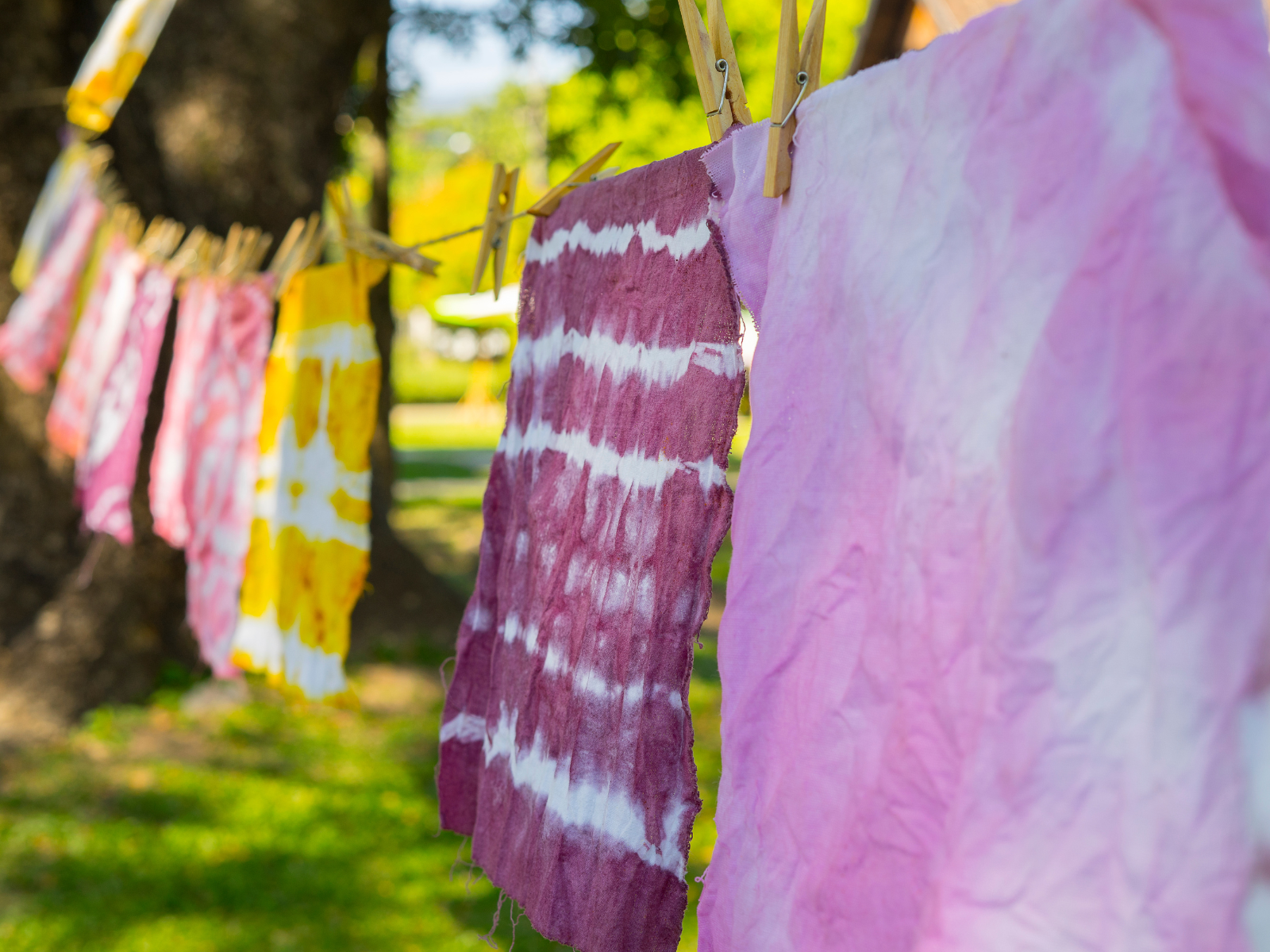


Types of Fabric Dye
Let's start by exploring the various types of fabric dyes.
From natural dyes derived from plants and insects to synthetic dyes created in laboratories, there are endless possibilities to play with colors.
Understanding the different types of fabric dye is crucial in achieving the desired outcome.
When it comes to the types of dyes, there are natural and synthetic options available.
Natural dyes come from plants, insects, and minerals, and have been used for centuries; these dyes tend to be more eco-conscious and less toxic than synthetic dyes.
Synthetic dyes, on the other hand, are made from chemicals and provide a wide range of vibrant colors and are more colorfast.
Fiber-reactive dyes bond chemically with the fabric, ensuring long-lasting color, while vat dyes, often used for cellulose fibers, yield bright, wash-fast colors.
The choice of dye depends on your fabric type, desired color intensity, and project requirements.


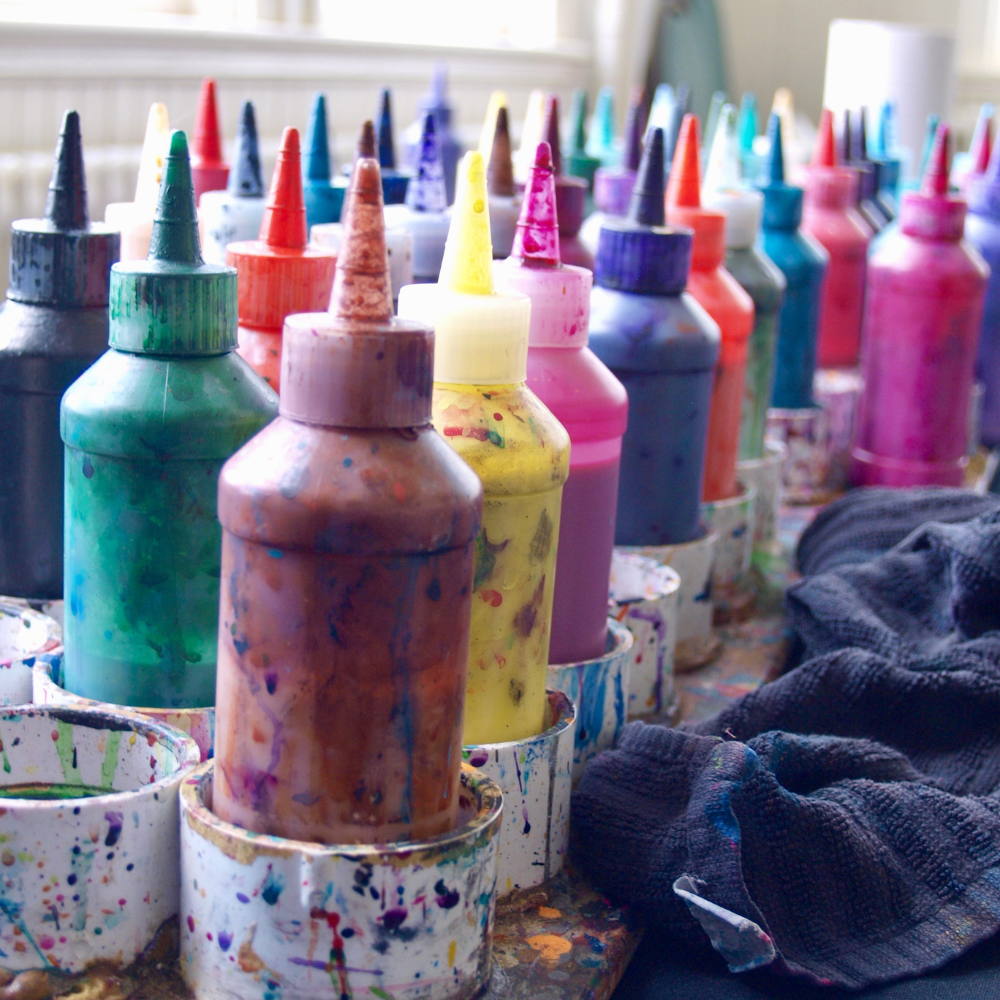
A Colorful Journey Through History
Fabric dyeing has a rich history that stretches back centuries.
Throughout time, dyed fabric has played a vital role in fashion, the arts, and design.
From the vibrant dyed textiles of ancient civilizations to the tie-dye revolution of the 1960s, fabric dyeing has been a medium of self-expression and cultural identity.
Imagine the elegance of indigo-dyed fabrics in Japan or the intricate patterns of African mud cloth.
Dyed fabric tells the stories of cultures, traditions, and personal narratives.
Nowadays, modern technologies have made dyeing more accessible, and artists are using it as a means of self-expression.
From painting on fabrics to using tie-dye techniques, artists are pushing boundaries and creating breathtaking artwork.
The possibilities are endless, and you can join this journey of exploration.
From ancient Egyptians using madder root to create red fabric to the Indigo-dying traditions of Japan, dyeing has come a long way.
Learning about the history of fabric dyeing can help you understand the medium and create your own unique works of art.

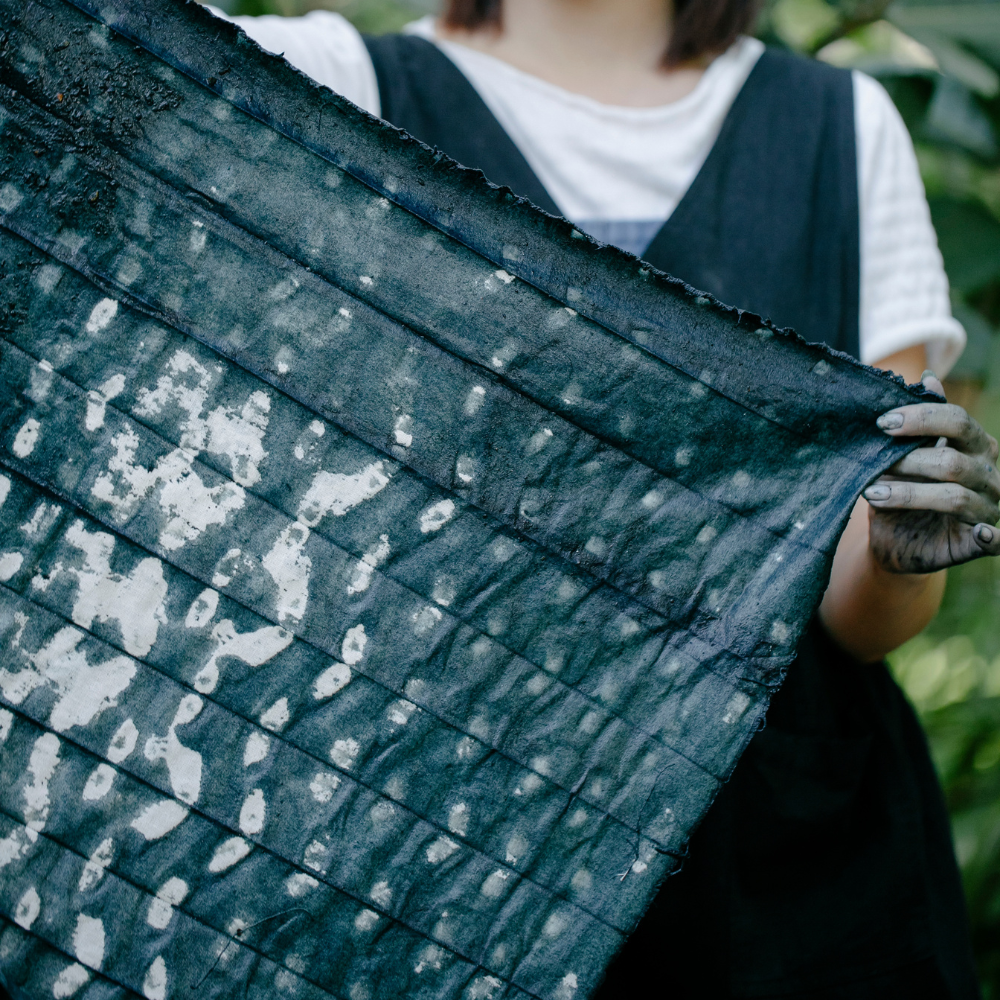

The Exciting Process of Dyeing Fabric
Now, let's embark on an exciting adventure in the world of fabric dyeing!
Whether using hand-dyed fabrics or commercial fabrics, the process involves soaking the fabric in a dye solution, which can either be done by hand or in a machine.
The fabric needs to be pre-washed to remove any impurities, and then the dye solution should be applied for the desired amount of time.
The longer the fabric is left in the dye, the darker the color will be.
There are also different techniques such as tie-dye or ombre that can be used to create unique and interesting designs on the fabric.
Whether you prefer liquid dyes, powdered dyes, or even spray dyes, make sure to select colors that resonate with your vision.
Apply the dye using techniques like dip-dyeing, brush dyeing, or even splatter dyeing for a playful touch.
Remember to be creative and have fun - experimenting is the key!
Once you've finished dyeing, it's time for the next step – setting the color.
This can be done by either heat-setting or cold-setting.
Heat-setting requires rinsing your fabric in hot water, while cold-setting requires soaking in vinegar and cold water for 30 minutes.
Plus, making sure you wash and dry your fabric is important to remove any excess dye.
With these steps in mind, you can start dyeing fabrics with confidence!



Choosing and Preparing Your Fabric
The fabric choice can make or break your dyeing project.
Natural fibers like cotton, silk, and wool hold dye well.
Synthetic fabrics like polyester or nylon may need a special type of dye, such as disperse dyes, that are designed to work with synthetic materials.
It's important to note that some fabrics, such as rayon and linen, can be tricky to work with - always check the fabric content before diving in!
Once you've selected the right fabric, pre-treat it by washing it in hot water to remove any dirt and oils.
It's important to pre-wash your fabric before dyeing as this will remove any dirt or oils that can impact the absorption of dyes.
Pre-washing your fabric removes any residues that could interfere with dye absorption, and soaking it in a solution of water and soda ash prepares it for the dyeing process by altering the pH level.
When pre-washing, make sure to use detergent and warm water in a separate load from other fabrics.
This step is crucial for achieving long-lasting color results!
The most common way to dye fabric is with a "bath;" creating your dye bath is like mixing a magic potion.
Dissolve your chosen dye in boiling water, following the manufacturer’s instructions for the concentration.
For an even distribution of a solid color, ensure the dye bath is large enough for the fabric to move freely.
Add the pre-washed fabric and stir for 15 minutes, then leave it to soak in the dye bath for an hour (or longer if desired).
Then rinse the dyed fabric with cold water until the water runs clear, and you're all set!

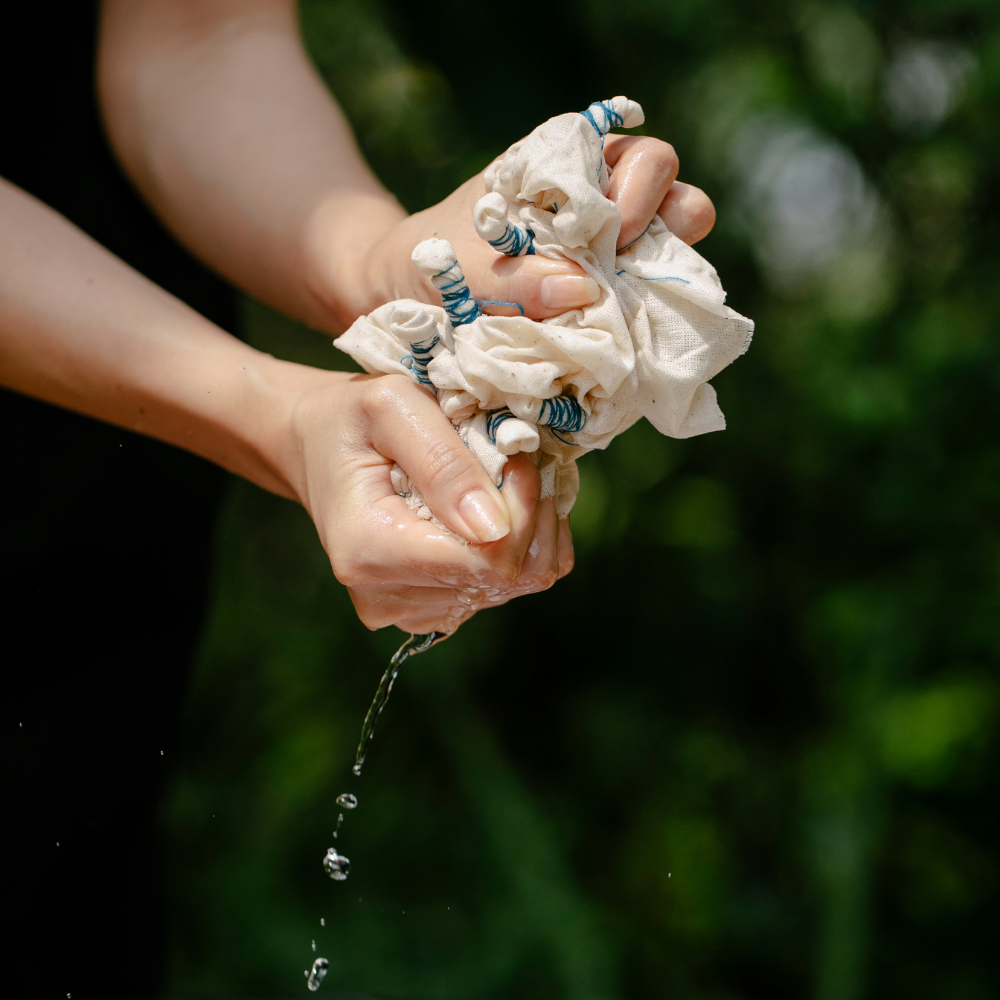

Dyeing Materials and Tools
When working with dyed fabric, there are a few materials that are essential to have on-hand.
Quality fabric, dye, rubber gloves, and a dyeing pot or basin are all necessary items.
Additionally, it's helpful to have a tarp or drop-cloth to work on and avoid any mess.
Having a color remover, such as Rit color remover, on hand can be useful if you need to lighten the fabric or remove any unwanted color.
White vinegar is also helpful for setting colors and adding shine to the fabric.
Synthetic brushes, sponges, or old toothbrushes can be used to apply paint or dye directly onto fabrics.
String, yarn, clothespins, and even bubble wrap can be fun materials to use with tie-dye techniques.
To remove stains, baking soda is a great tool to have in your dyeing arsenal.
To master the art of fabric dyeing, you need the right tools and materials, so prepare yourself with a stash of fabric, dye, measuring cups, a stainless steel spoon, and containers to mix your colors.
Want to play with resist dyeing?
Grab some wax or tape to create unique patterns and designs.
Using wax or a resist technique can also help create unique designs and patterns on the fabric.
And if you're feeling adventurous, try your hand at tie-dye techniques like the classic spiral, the trendy crumple, or the mesmerizing accordion fold.
The possibilities are as limitless as your imagination!
Finally, don’t forget to stock up on some protective gear, like gloves and a face mask - safety first!
If you skip this step, you may risk staining your clothes, skin, and furniture with dye!
Plus, some dyes may have chemicals that can be harmful, so make sure to use protective gear and read all the manufacturer's instructions before starting.
You’re now ready to explore the world of dyed fabrics!
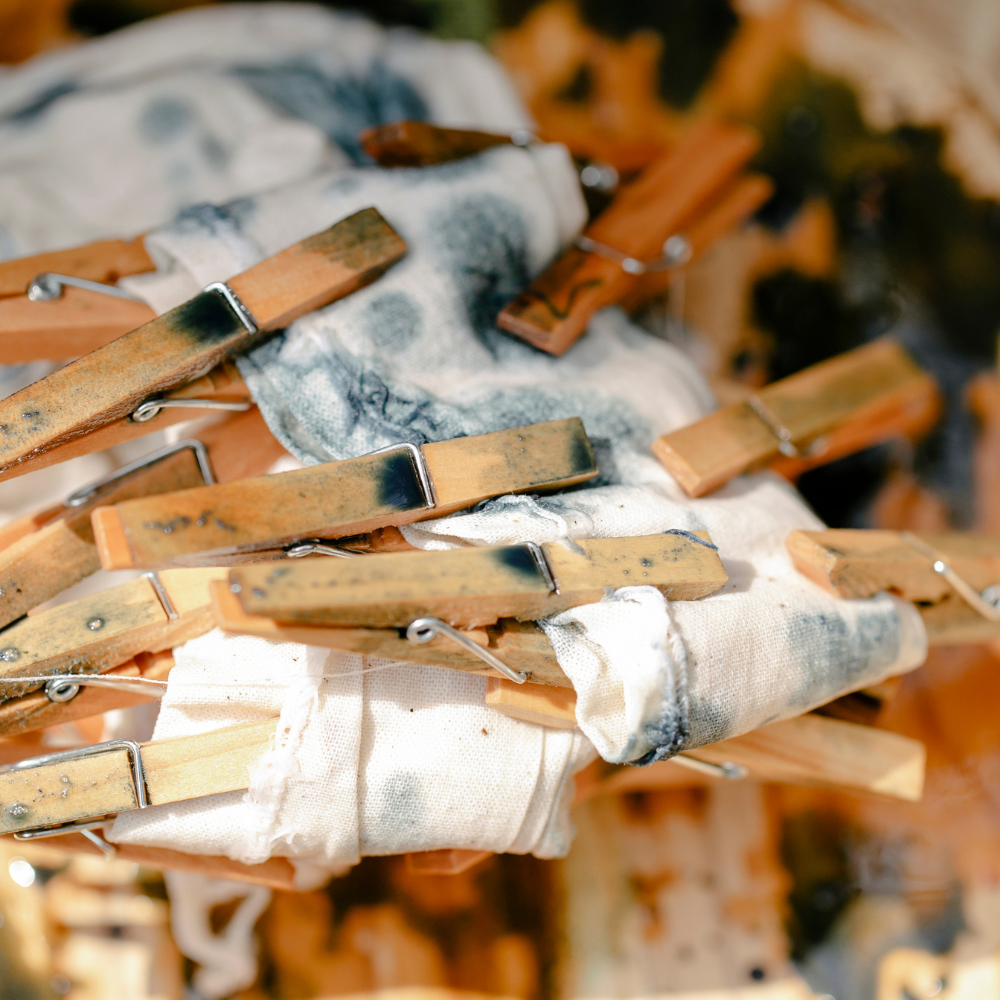
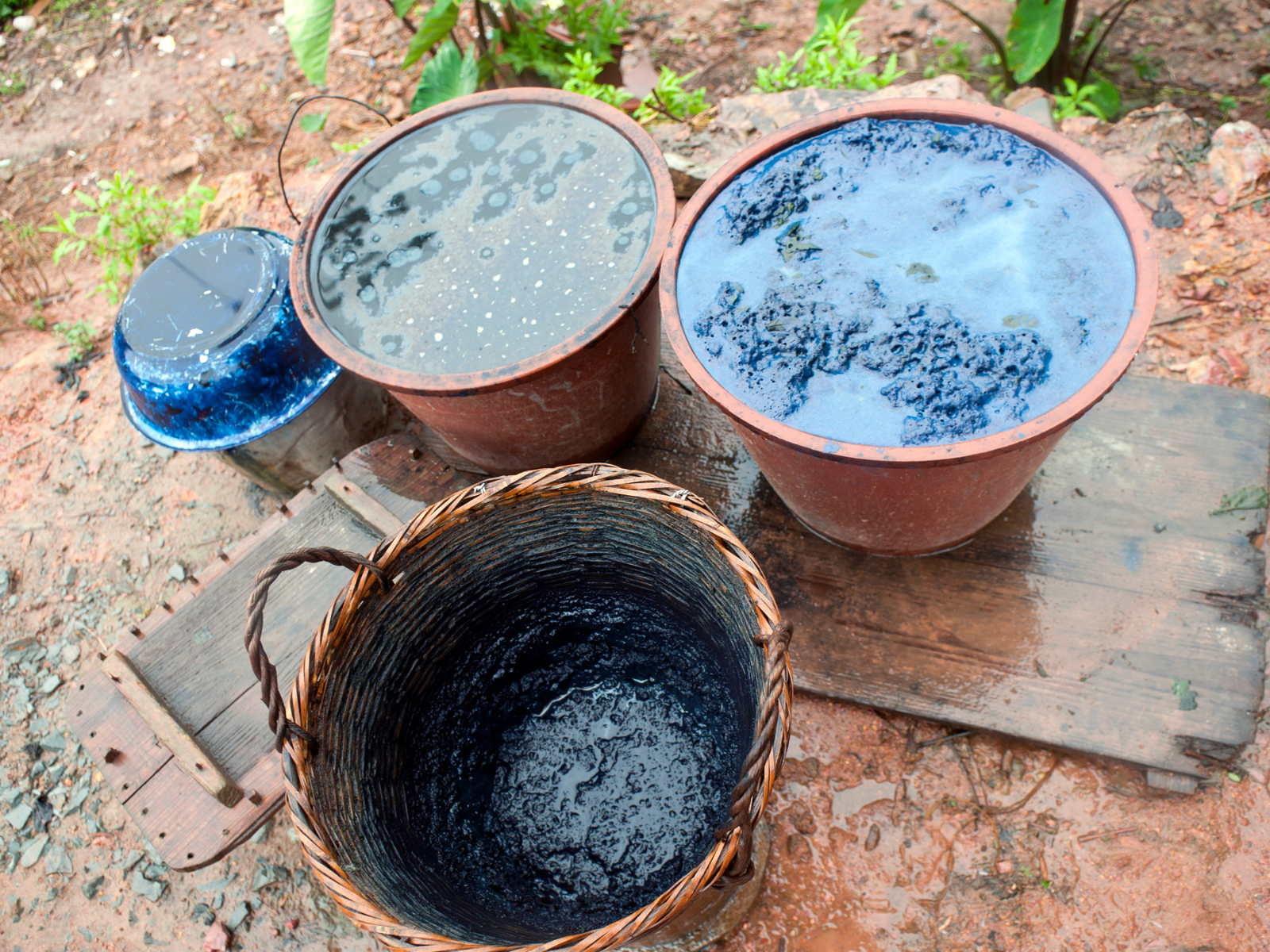
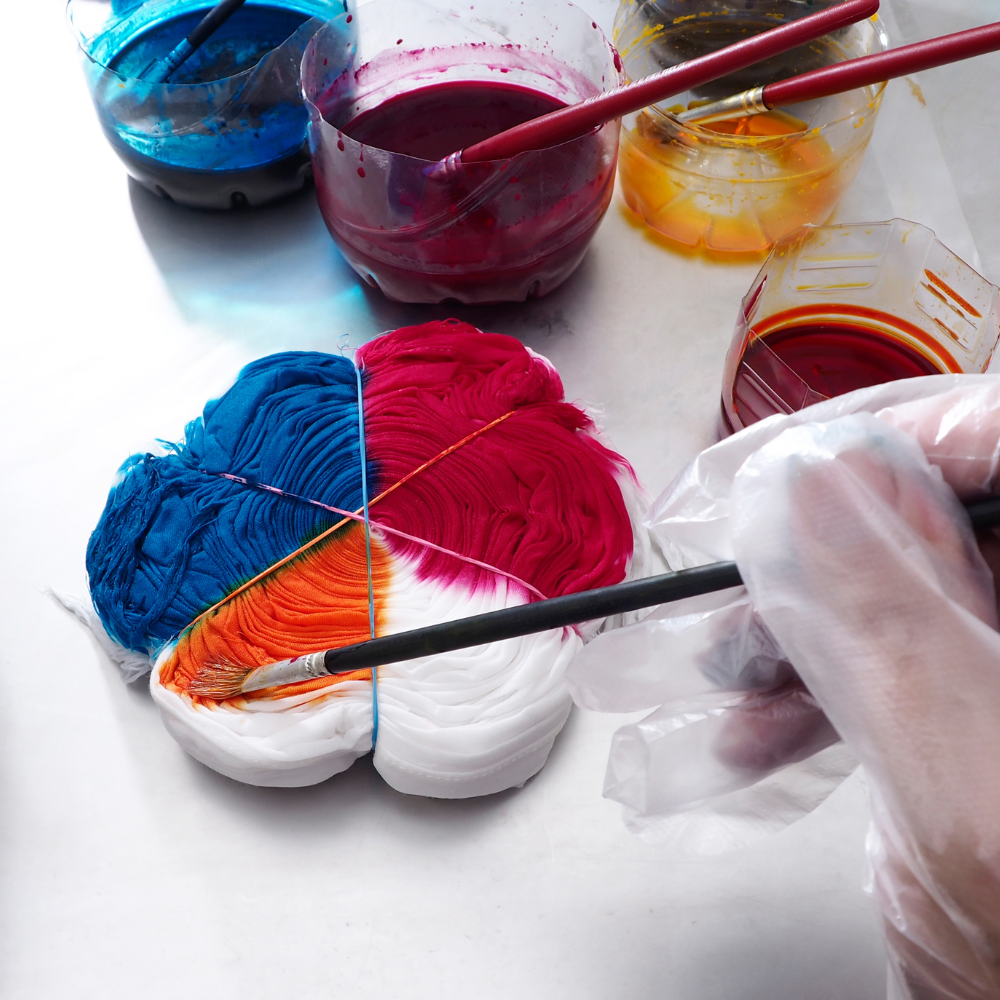
Fabric Dyeing Techniques
Now that you understand the types of fabric dye, let's move on to techniques.
Whether dyeing an old t-shirt, a quilt, a purchased fabric item, or creating a unique patterned fabric, the way a fabric is dyed can make all the difference in the outcome.
So, choosing the right technique and mastering its intricacies is essential for achieving beautiful results.
The most popular dying methods include hand painting, batik, tie-dye, and screen printing.
Hand painting is perfect for small projects that require precise details.
Using a brush or sponge, you can directly apply dyes onto the fabric to create intricate designs or patterns with ease.
Batik is a technique that has been used in cultures around the world for centuries.
This process involves using wax to create intricate patterns and then dyeing the fabric with different colors.
Tie-dye is one of the most popular techniques, as it's easy to do and requires minimal supplies.
From classic spirals to a variety of fun patterns, tie-dye can be used to create unique and vibrant pieces.
The screen printing is a technique that involves using a mesh stencil and fabric paint (or dye) to transfer an image onto the fabric.
Screen printing is perfect for large-scale projects as it allows you to quickly create multiple prints of the same design.
For a gentle color gradient, try the ombre technique by dipping the fabric progressively into the dye bath.
To create funky patterns, twist and tie your fabric with rubber bands for a classic tie-dye effect.
Experiment with resist dyeing methods like shibori by folding, stitching, or clamping the fabric before dyeing to create intricate patterns.
If you’re looking to make a bold statement, try painting with dye directly onto your fabric using brushes or sponges.

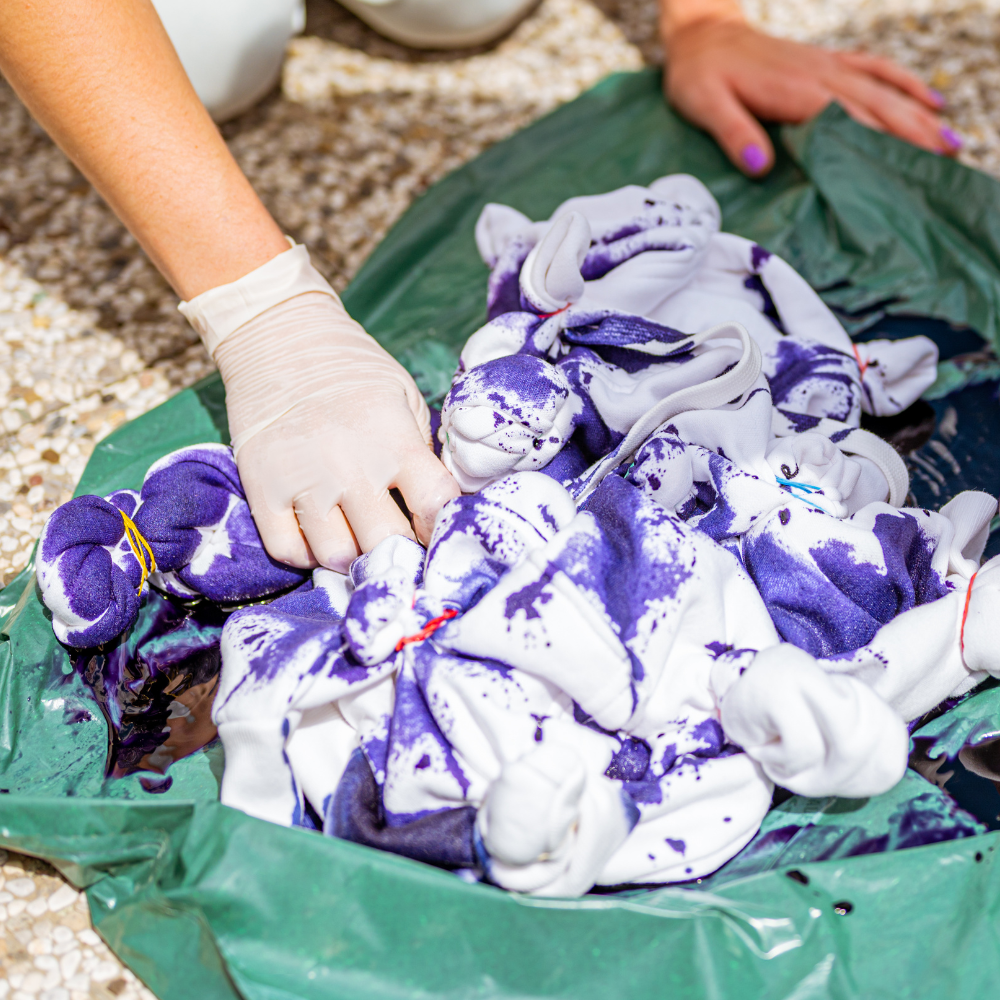

Rinsing, Washing, and Maintenance
Caring for your dyed fabric is just as important as the dyeing process itself.
To ensure that your fabric stays vibrant and long-lasting, it's essential to rinse, wash, and maintain it properly.
The best way to remove loose excess dye from your fabric is by rinsing it with cold water until the water runs clear, then wash it on the cold cycle with a mild detergent to remove any excess dye.
To prolong the lifespan of your dyed fabric, you can hand wash it separately in cold water and avoid direct sunlight when drying.
Ironing the fabric on the reverse side can also help set the color and make it last longer.
Additionally, try to avoid washing your dyed fabrics with white or light-colored clothes in order to prevent any potential staining.
Following these steps will ensure that your dye job looks fabulous for years to come!


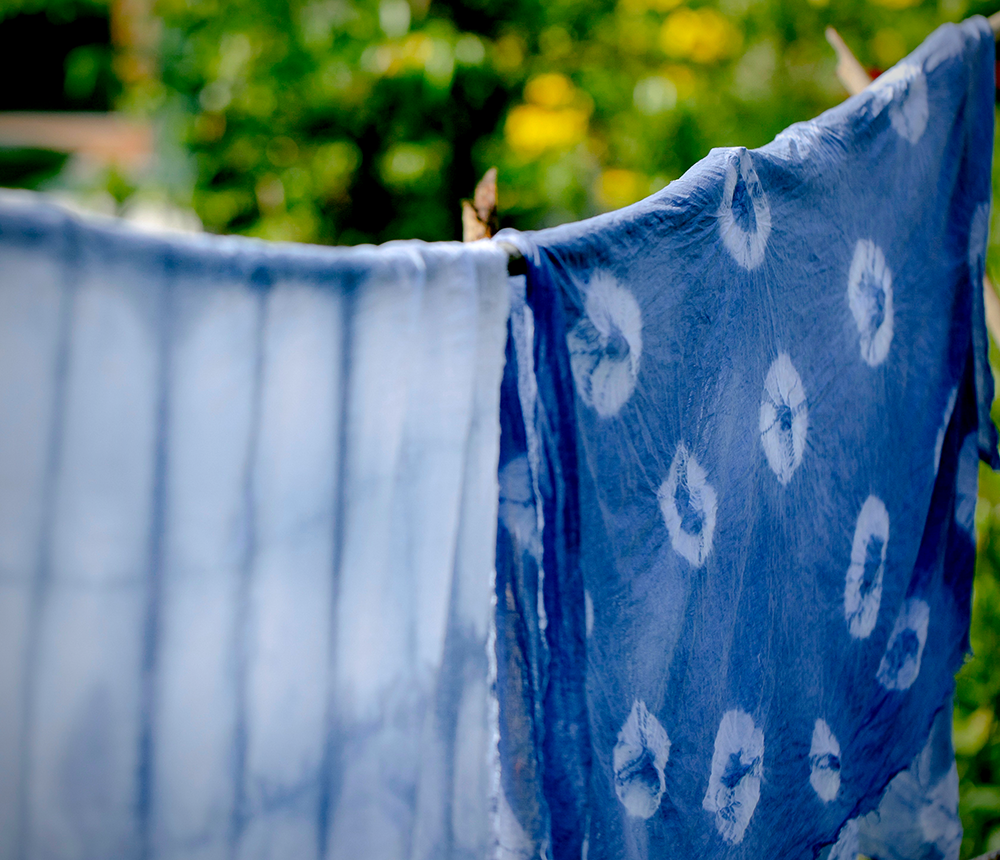
Creating Stunning and Unique Dye Effects
Now that you've got your dye arsenal ready, it's time to unleash your creativity.
Want to achieve a tie-dye effect?
Grab some rubber bands and twist your fabric into funky patterns before applying the dye.
Looking for an ombre effect?
Gradually dip your fabric into the dye bath, starting with a lighter shade and working your way to a deeper color.
Experiment with techniques like shibori, batik, or even ice dyeing for a truly mesmerizing result.
Bringing in elements from nature such as flowers or leaves can also help to create unique designs.
With your beautifully dyed fabric, the possibilities are endless!
Sew vibrant clothing, craft eye-catching home décor items, or create unique accessories.
Showcase your creativity and make a statement with your dyed fabric creations.
Dyeing fabric is a fun and rewarding experience that can help you express your true style.
With a few supplies, a bit of patience, and some imagination, you’ll be creating stunning works of art with dyed fabrics in no time!
So, have fun playing with colors and create unique works of art; let your imagination run wild!

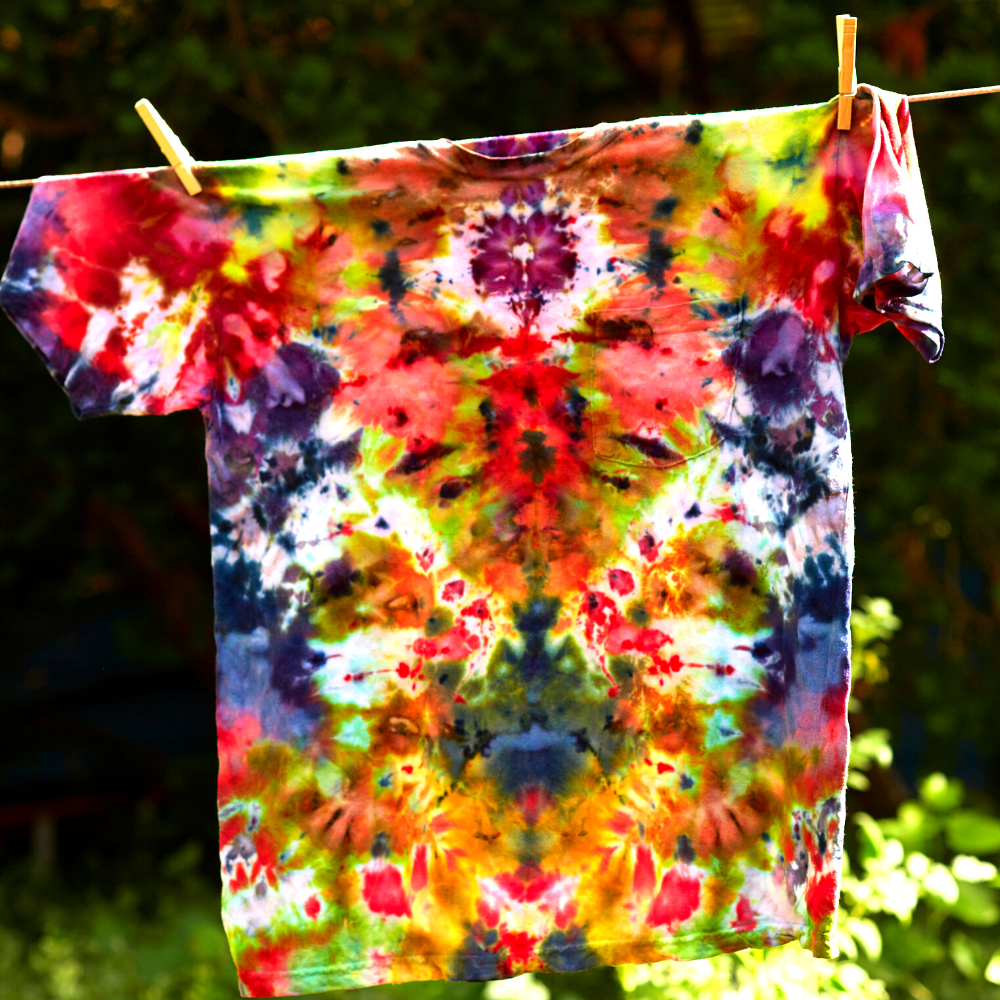

Tips and Tricks for Dyeing Success
Achieving the perfect color can sometimes feel like chasing a rainbow, but fear not!
We've got some tips and tricks up our sleeves to help you on your dyeing journey.
Here are some tips and tricks to help you create beautiful fabric masterpieces that will have everyone stopping in their tracks!
- Always wear protective gear such as gloves, eyewear, and a mask when dyeing to protect yourself from colorful surprises.
- Follow the directions on the dye package and to take safety precautions when handling chemicals.
- If possible, use natural dyes like those derived from plants or minerals for a more sustainable approach to dyeing.
- Select the right type of fabric that will best absorb the dye.
- Use concentrated dyes to achieve richer, deeper colors.
- Always work in a well-ventilated area to avoid inhaling or ingesting any fumes.
- Do a small test with the dye before committing to entire projects; this will help you make sure that the color is what you want.
- Avoid washing dyed fabric with light clothes, as this may cause staining.
- Store your dyes in a cool and dry place.
- Play around with different concentrations of dye to achieve subtle or bold results, and experiment with different techniques and colors to create different effects.
- Don't forget to rinse and wash your dyed fabric thoroughly to preserve its vibrancy.
- For consistent and even colors, stir the fabric regularly in the dye bath.
- If you want to create custom patterns, try using a squeeze bottle to apply dye precisely.
- Remember, practice makes perfect, so don't be afraid to experiment and learn from each project.
- Always remember to pre-wash and iron the fabric before dyeing it, as this will help the dye absorb more evenly.
- Have fun and be creative!
With these tips, you’re ready to take on the wonderful world of fabric dyeing like a pro!


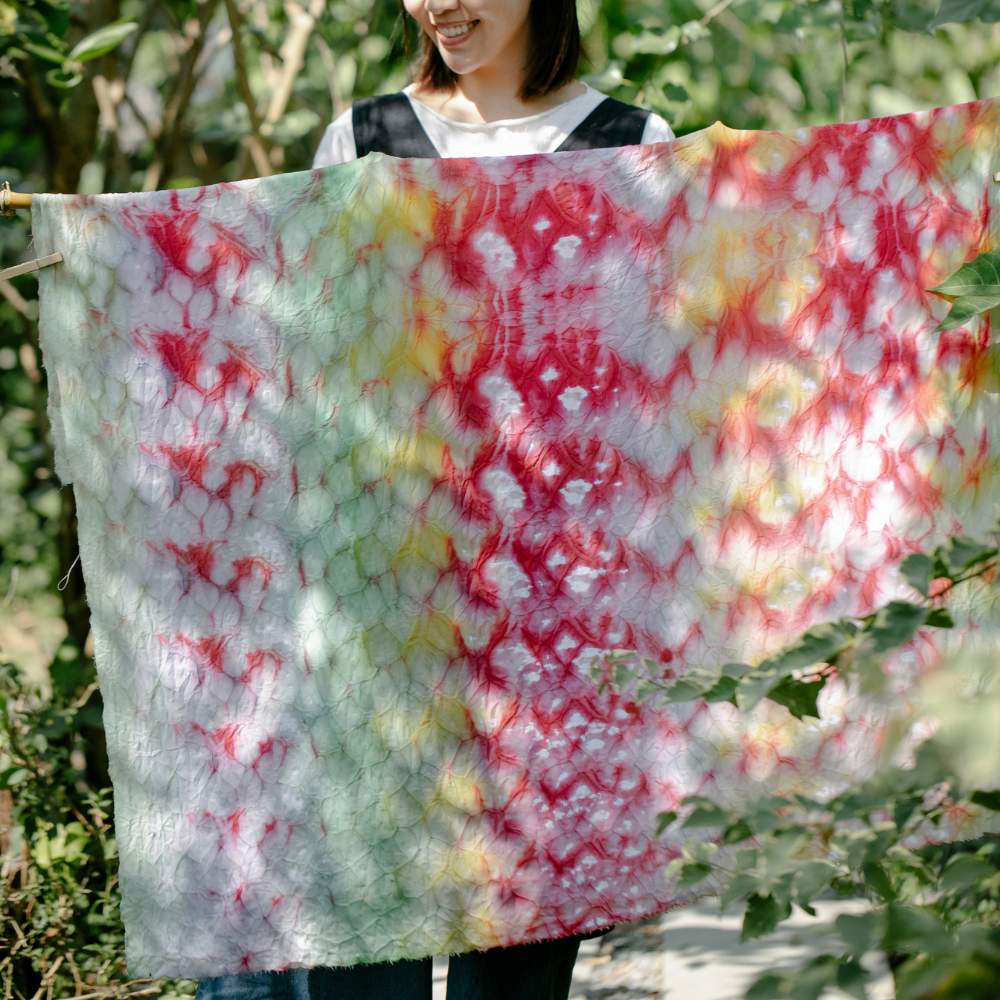
Reap the Rewards of Dyeing Fabrics
Congratulations, you've unlocked the secrets of dyed fabric!
Fabric dyeing is an art that allows you to express your creativity and transform ordinary fabric into extraordinary masterpieces.
With this comprehensive guide, you're now equipped with knowledge and techniques to start your fabric dyeing adventure.
From learning about different types of dyes to exploring its colorful history and diving into the exciting dyeing process, you're now equipped to create masterpieces that reflect your unique style.
Now that you know what it takes to create beautiful works of art with dyed fabrics, the rest is up to you!
The best part about working with dyes?
The results are always unique and unpredictable - no two projects will ever look alike.
Dyed fabric can add a unique touch to any project; from tying dyes to hand painting, there are numerous ways to use dye in your projects, and each technique yields beautiful results!
Not only does dyeing fabrics offer an artistic outlet, but it’s also a great way to reduce waste and upcycle materials.
Remember, the key to success is to enjoy the process, be bold, and embrace the unexpected!
And who knows, maybe your masterpiece will be the next big trend in fashion or design!
Keep exploring, keep experimenting, and keep the world dyed with creativity.
Unleash your imagination, experiment fearlessly, and let your passion for dyed fabric light up your world; get ready to amaze yourself and others with your stunning creations.
So, grab your fabric, don your creative hat, and let the colors flow!
Happy dyeing!
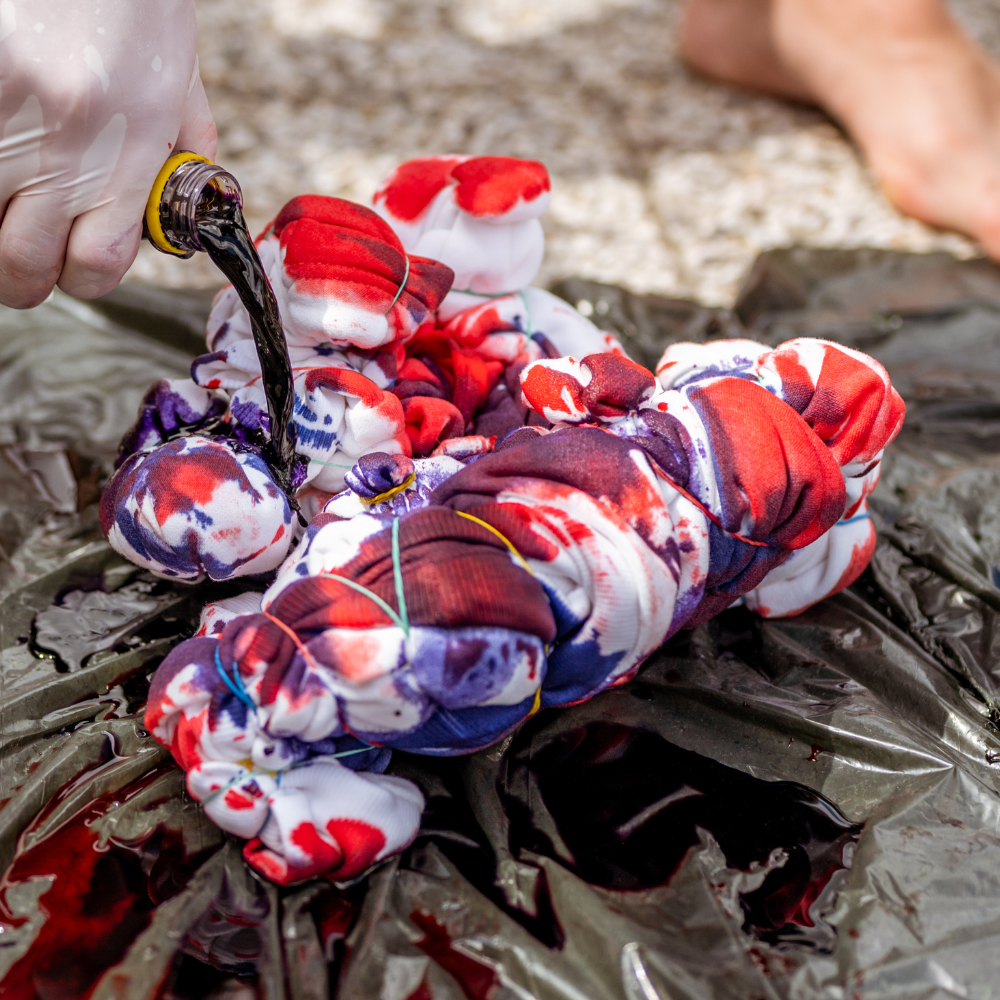
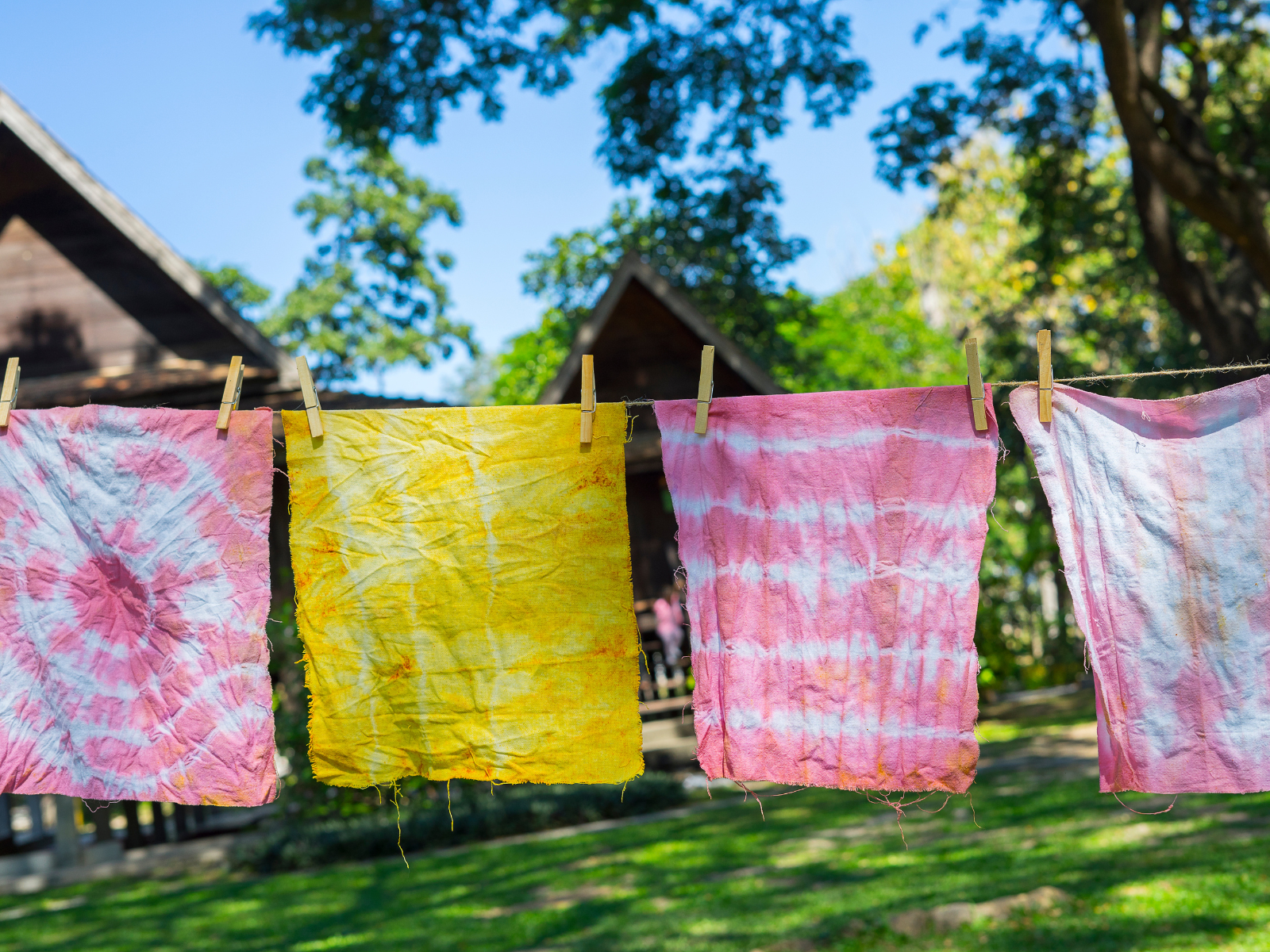

Eager to learn all the secrets of working with fabric dyeing? Check out Online Fabric Store's video!
Want even more content about creativity and art?
Be sure to check out all of our creative chronicles!
Interested in crafting with fabrics?
Check out some of our other textile articles:










